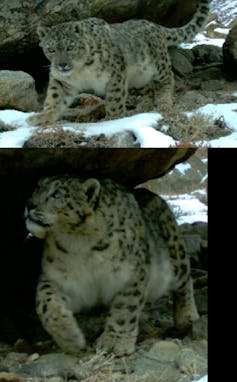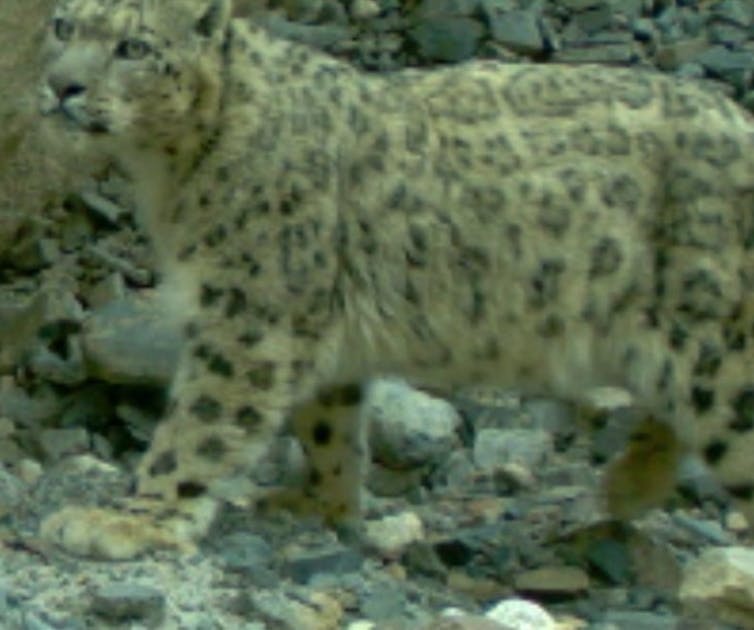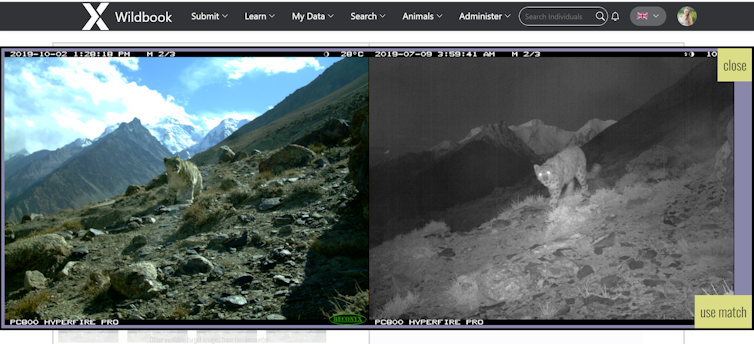Developer Offer
Try ImaginePro API with 50 Free Credits
Build and ship AI-powered visuals with Midjourney, Flux, and more — free credits refresh every month.
AI Unmasks Mountain Ghosts Aiding Snow Leopard Counts
Snow leopards, often called the “ghosts of the mountains,” live up to their name. Imagine enduring months in Asia's harsh, rugged mountains, hoping for just a glimpse. These elusive big cats move silently on rocky slopes, their pale coats blending so perfectly with snow and stone that even seasoned biologists rarely see them in the wild.
Travel writer Peter Matthiessen famously spent two months in 1973 searching the Tibetan plateau for them, an effort he chronicled in a 300-page book. He never saw one. Forty years later, Peter’s son Alex retraced his father's journey and also didn’t see a snow leopard.
The Challenge of Counting Elusive Cats
Researchers have long struggled to determine the global population of snow leopards. In 2017, the International Union for Conservation of Nature (IUCN) reclassified the snow leopard from endangered to vulnerable, with estimates ranging from 2,500 to 10,000 adults in the wild. However, the IUCN also warned that numbers are declining in many areas due to habitat loss, poaching, and human-wildlife conflict. Scientists studying these animals are eager to protect the species and their habitat, but this requires knowing exactly where they live and their population numbers.
Traditional tracking methods, like searching for footprints and droppings, have limitations. To overcome the rarity of direct sightings, conservationists from the Wildlife Conservation Society, including experts Stéphane Ostrowski and Sorosh Poya Faryabi, started using automated camera traps in Afghanistan. These devices capture thousands of images over months by snapping photos whenever movement is detected, all in the hope of getting a rare glimpse of a snow leopard.
However, capturing images is only the first step. The subsequent, more challenging task is distinguishing one snow leopard from another.
 Are these the same animal or different ones? It’s really hard to tell. Eve Bohnett, CC BY-ND
Are these the same animal or different ones? It’s really hard to tell. Eve Bohnett, CC BY-ND
The Intricacies of Identification
At first glance, identifying individual snow leopards might seem straightforward. Each cat has a unique pattern of black rosettes on its coat, similar to a human fingerprint. Yet, in practice, identifying individuals by these patterns is a slow, subjective, and error-prone process. Photos can be taken at awkward angles, in poor lighting, or with parts of the animal obscured, making matches difficult.
A common error occurs when photos from different cameras are mistakenly marked as depicting different animals when they actually show the same individual. This inflates population estimates. Furthermore, camera trap images can get mixed up or misfiled, leading to encounters with a single cat being split across multiple identities.
I am a data analyst working with the Wildlife Conservation Society and other partners at Wild Me. My research, along with others', has shown that even trained experts can misidentify animals. They might fail to recognize repeat visitors at camera-monitored locations, counting the same animal multiple times. One study found that snow leopard populations were overestimated by more than 30% due to such human errors.
To minimize these errors, researchers adhere to camera sorting guidelines. At least three clear pattern differences or similarities must be confirmed between two images to declare them as belonging to the same or different cats. Blurry, dark, or awkwardly angled images might have to be discarded. Identification efforts can range from easy cases with clear, full-body shots to ambiguous ones requiring collaboration and debate. Despite these protocols, variability persists, and more experienced observers generally achieve higher accuracy.
Now, artificial intelligence systems are offering help in two significant ways to those trying to count snow leopards.
AI Joins the Hunt: Spotting the Spots
Modern AI tools are revolutionizing the processing of these extensive photo libraries. Firstly, AI can rapidly sift through thousands of images, flagging those that contain snow leopards while ignoring irrelevant ones, such as images of blue sheep, rocky terrain, or shadows.
 Unique spots and spot patterns are key to telling snow leopards apart. Eve Bohnett, CC BY-NC-ND
Unique spots and spot patterns are key to telling snow leopards apart. Eve Bohnett, CC BY-NC-ND
Secondly, AI can identify individual snow leopards by analyzing their unique rosette patterns, even when poses or lighting conditions vary. Each snow leopard encounter is compared against a catalog of previously identified photos. If a match is found, it's assigned a known ID; otherwise, it's entered as a new individual.
In a recent study, several colleagues and I evaluated two AI algorithms, both individually and in combination.
The first algorithm, called HotSpotter, identifies individual snow leopards by comparing key visual features like coat patterns, highlighting distinctive “hot spots” with a yellow marker.
The second is a newer method known as pose invariant embeddings. This operates similarly to facial recognition technology, recognizing layers of abstract features in the data to identify the same animal regardless of its position in the photo or the lighting.
We trained these systems using a curated dataset of photos from zoos in the U.S., Europe, and Tajikistan, as well as images from the wild, including Afghanistan.
Individually, each model correctly identified the cat from a large photo library about 74% of the time. However, when combined, the two systems achieved an accuracy of 85%.
These algorithms were integrated into Wildbook, an open-source, web-based software platform developed by the nonprofit organization Wild Me and now adopted by ConservationX. We deployed the combined system on a free website, Whiskerbook.org, where researchers can upload images, seek matches using the algorithms, and confirm these matches with side-by-side comparisons. This site is part of a growing family of AI-powered wildlife platforms aiding conservation biologists in working more efficiently and effectively to protect species and their habitats.
 A view from an online wildlife-tracking system suggests a possible match for a snow leopard caught by a remote camera. Wildbook/Eve Bohnett, CC BY-ND
A view from an online wildlife-tracking system suggests a possible match for a snow leopard caught by a remote camera. Wildbook/Eve Bohnett, CC BY-ND
The Indispensable Role of Human Expertise
These AI systems are not infallible. While AI can quickly narrow down candidates and flag likely matches, expert validation is crucial for ensuring accuracy, especially with challenging or ambiguous photos.
Another study we conducted pitted AI-assisted groups of experts and novices against each other. Each group was given a set of three to ten images of 34 known captive snow leopards and asked to use the Whiskerbook platform to identify them. They were also asked to estimate the number of individual animals in the photo set.
The experts accurately matched about 90% of the images and provided population estimates within about 3% of the true number. In contrast, the novices identified only 73% of the cats and underestimated the total number, sometimes by 25% or more, by incorrectly merging two individuals into one.
Importantly, both groups performed better than when experts or novices did not use any software.
The key takeaway is clear: human expertise remains vital, and combining it with AI support yields the most accurate results. My colleagues and I are hopeful that by using tools like Whiskerbook and the AI systems embedded within them, researchers will be able to study these elusive animals more quickly and confidently.
With AI tools like Whiskerbook shedding light on the mysteries of these mountain ghosts, we gain another powerful method to safeguard snow leopards. However, ultimate success depends on a continued commitment to protecting their fragile mountain homes.
Compare Plans & Pricing
Find the plan that matches your workload and unlock full access to ImaginePro.
| Plan | Price | Highlights |
|---|---|---|
| Standard | $8 / month |
|
| Premium | $20 / month |
|
Need custom terms? Talk to us to tailor credits, rate limits, or deployment options.
View All Pricing Details

